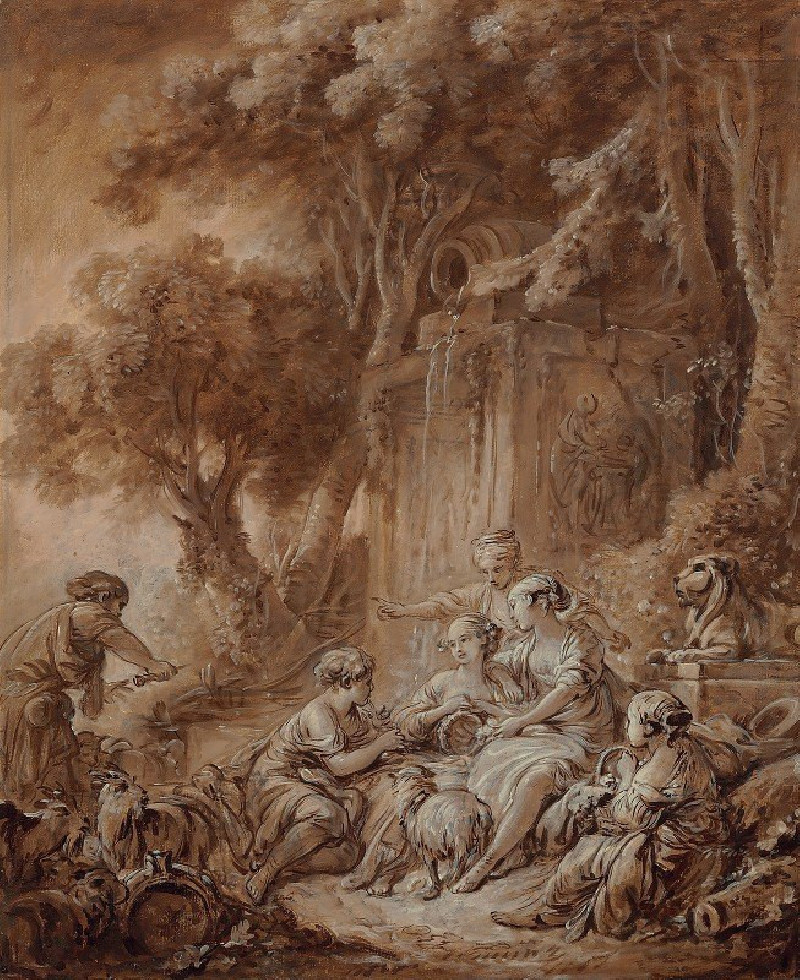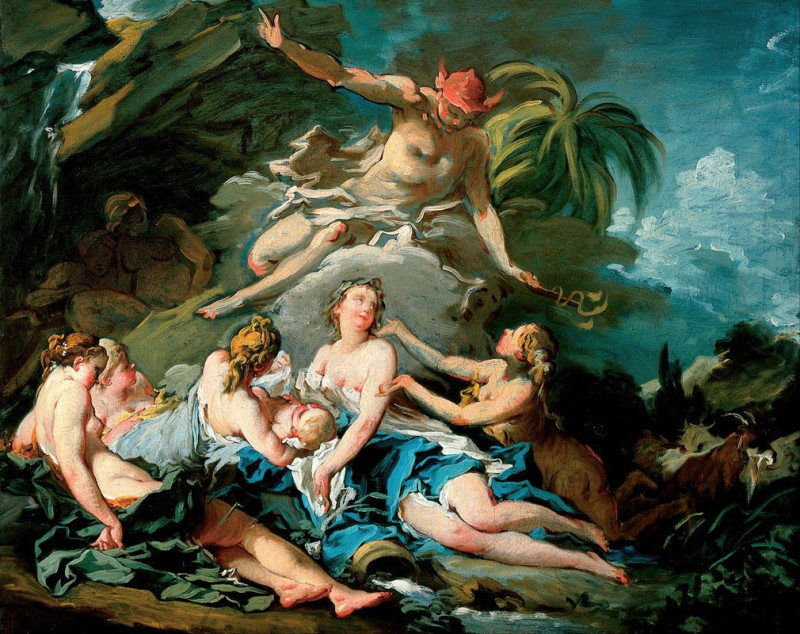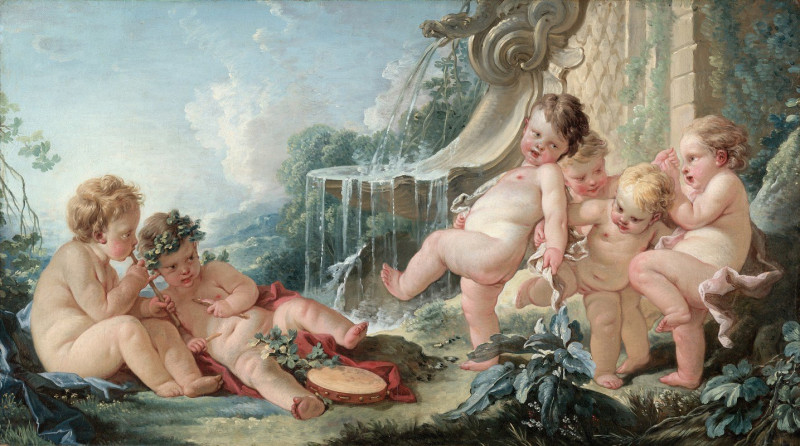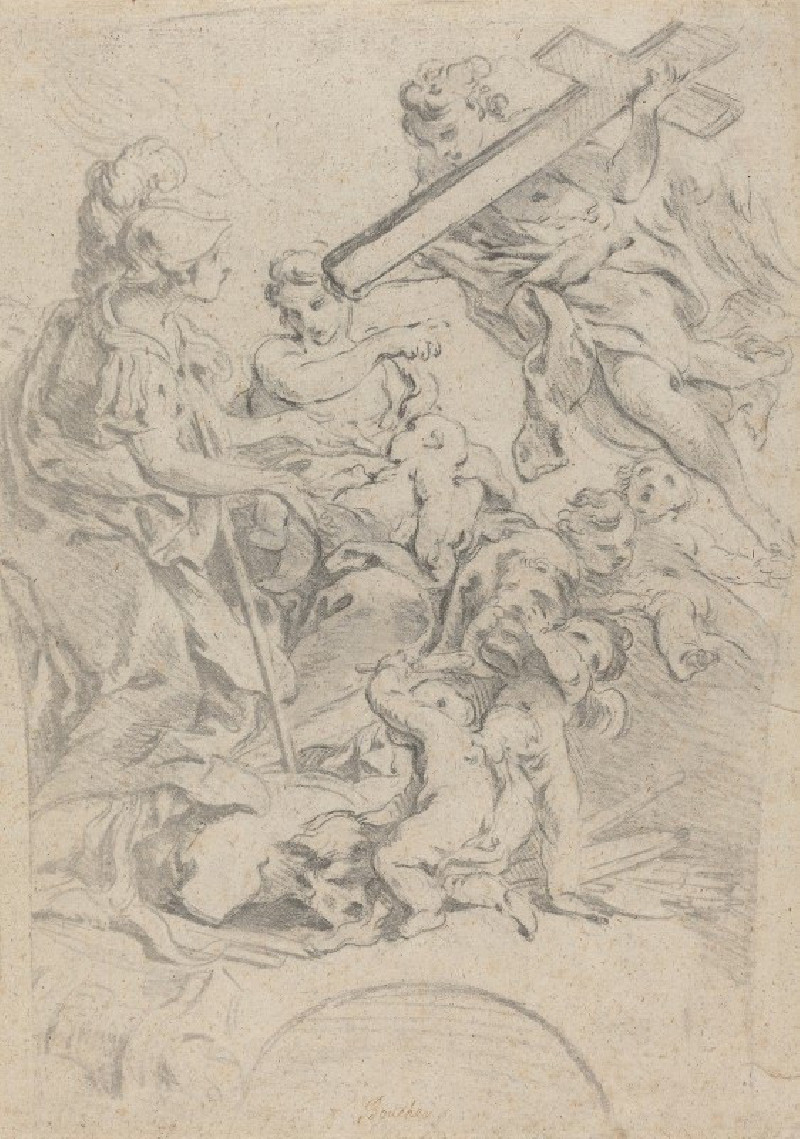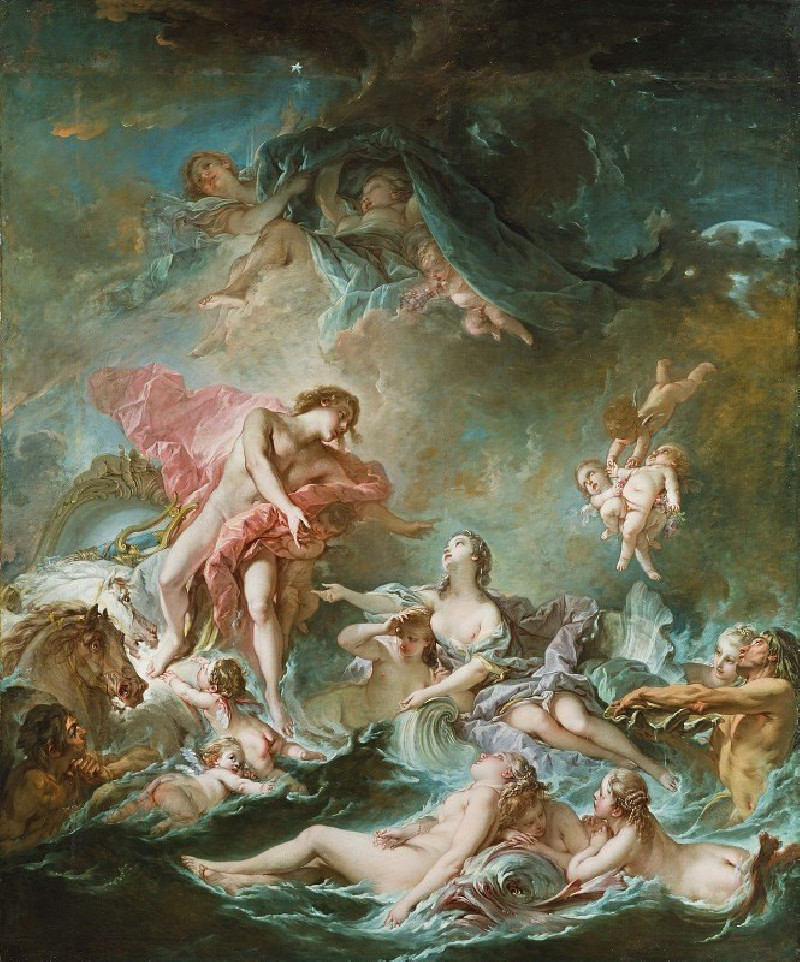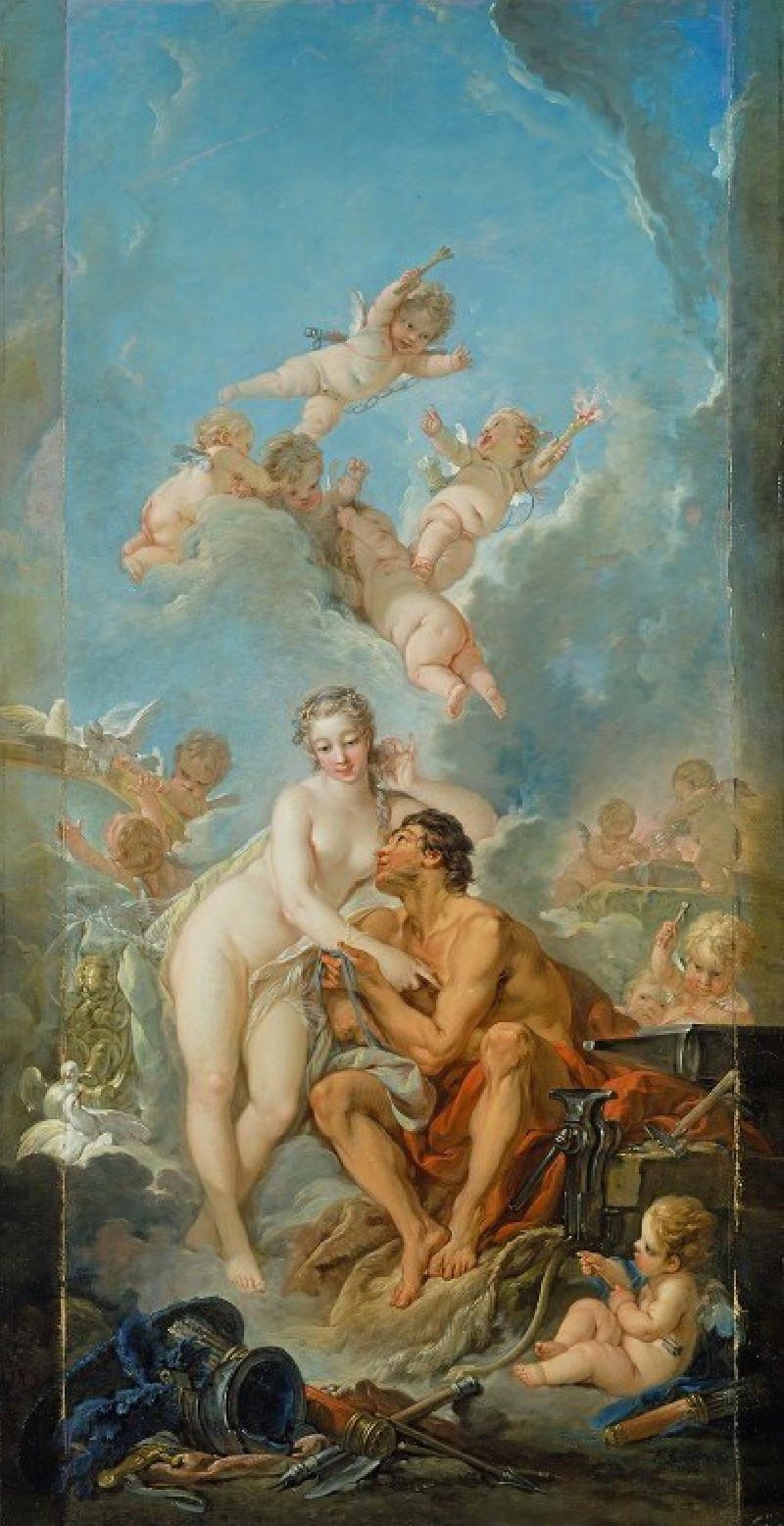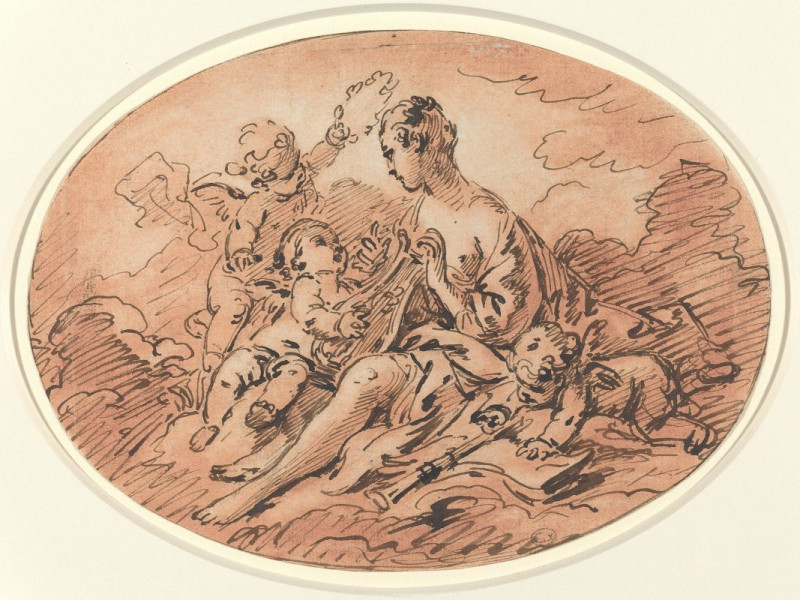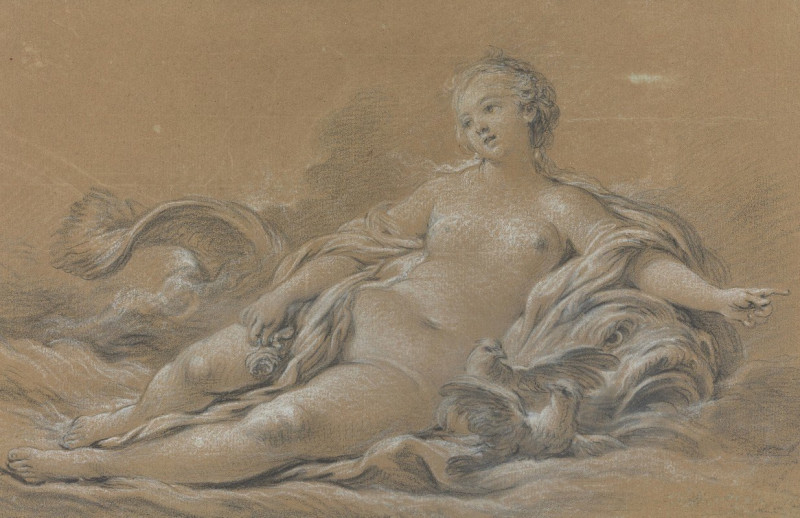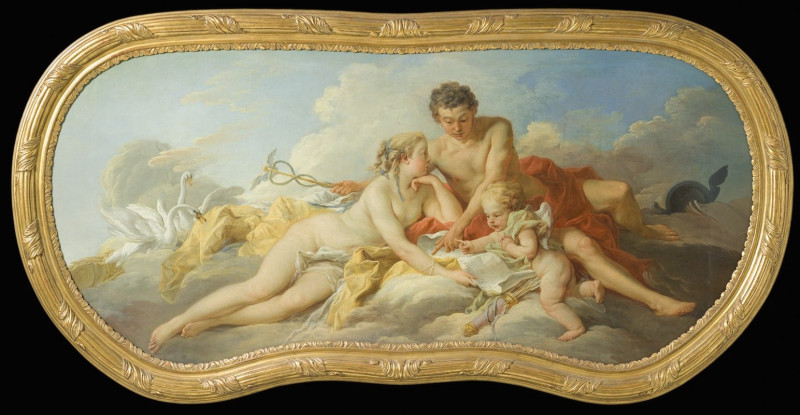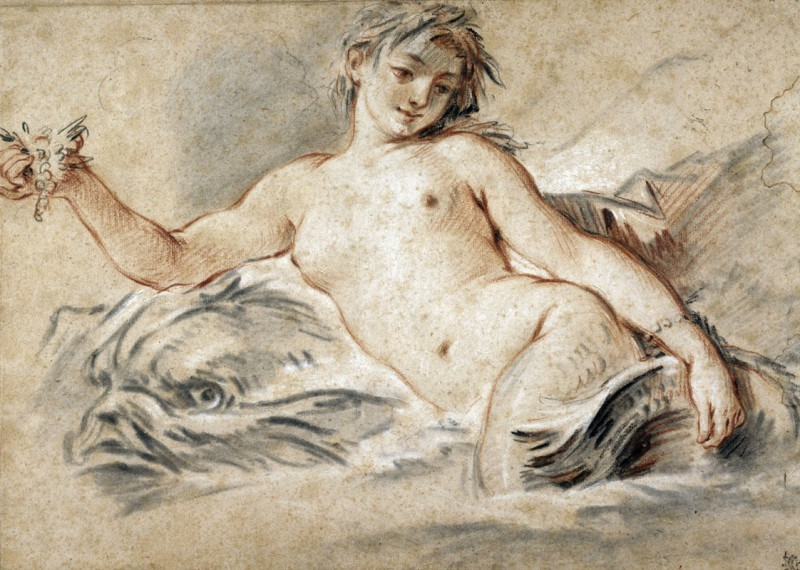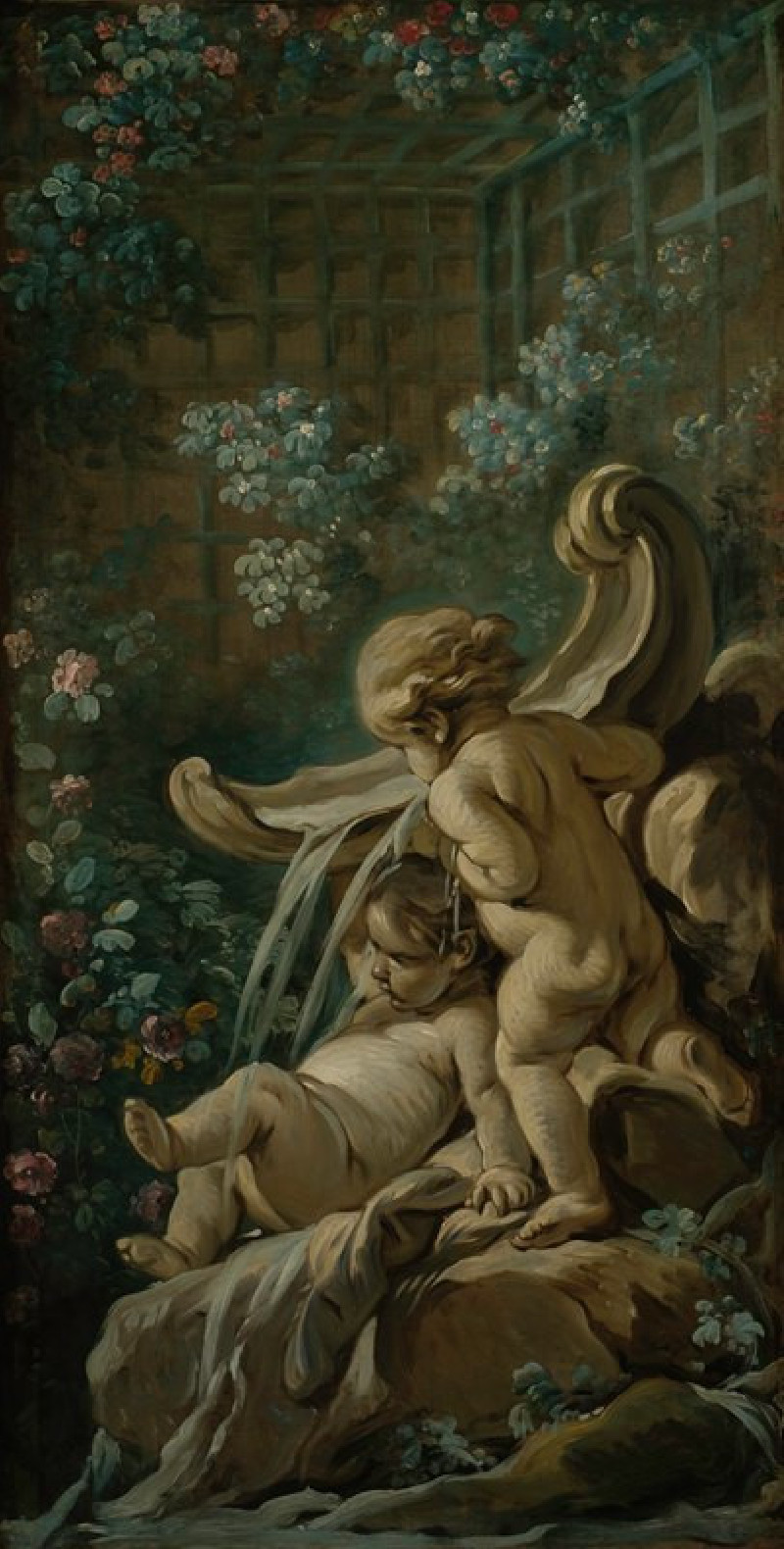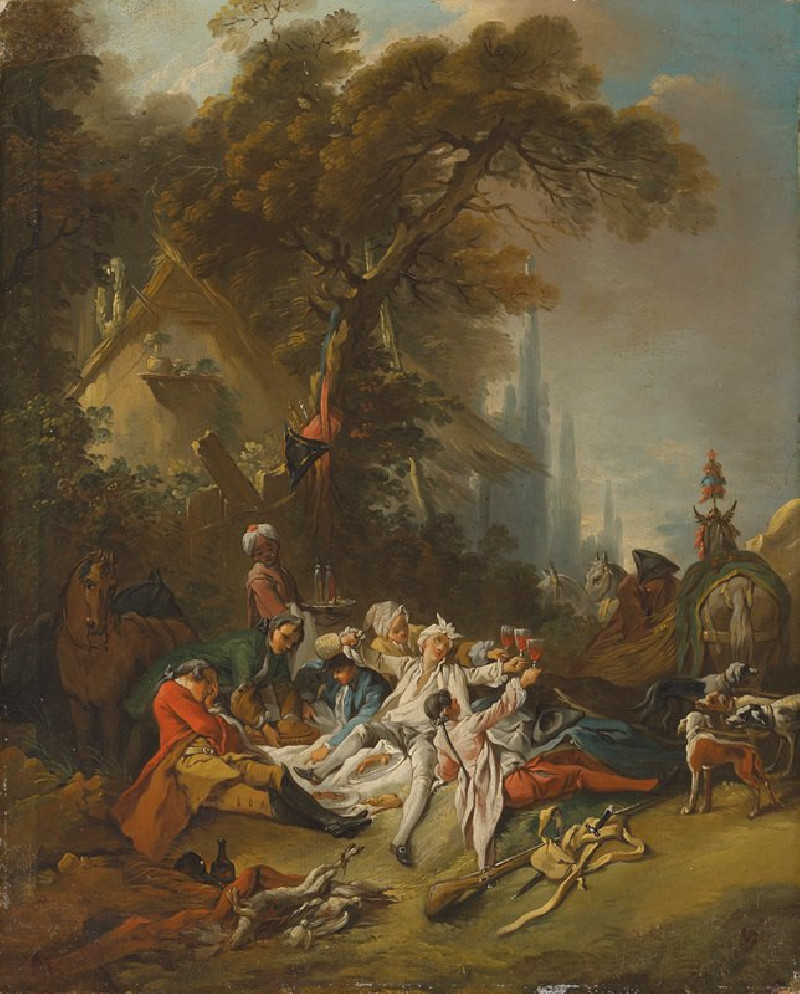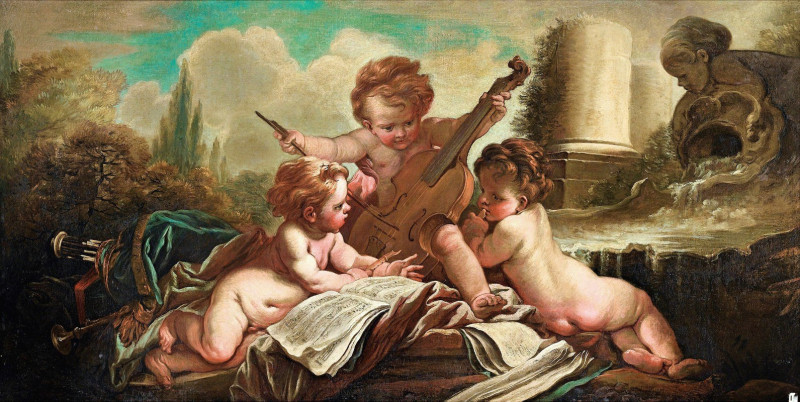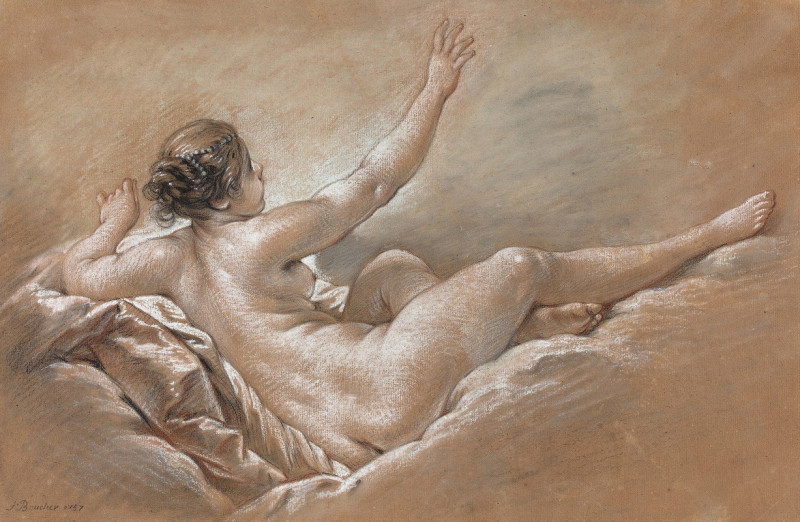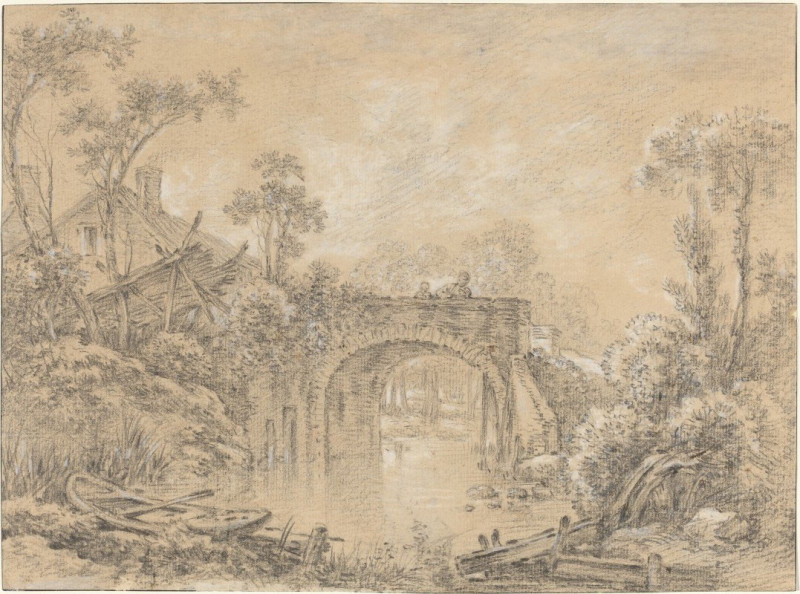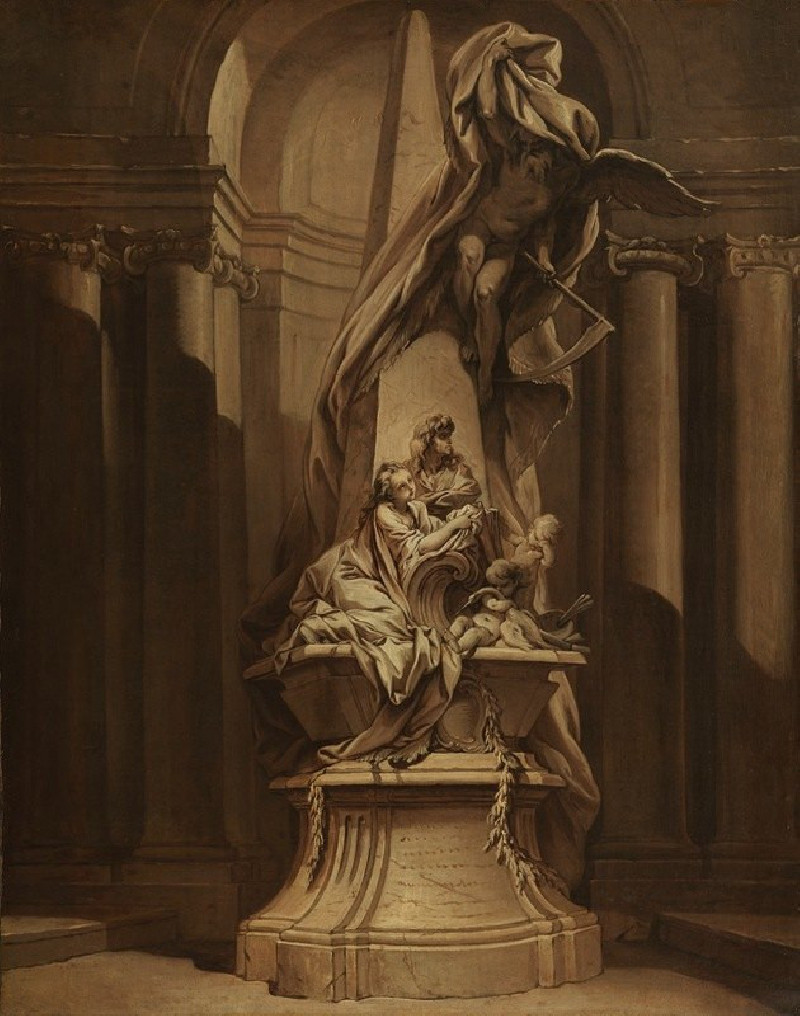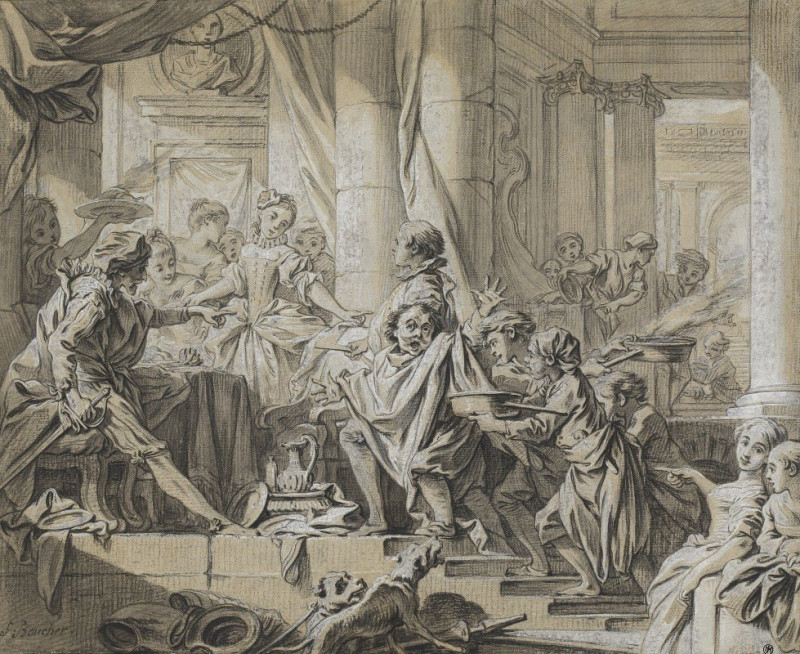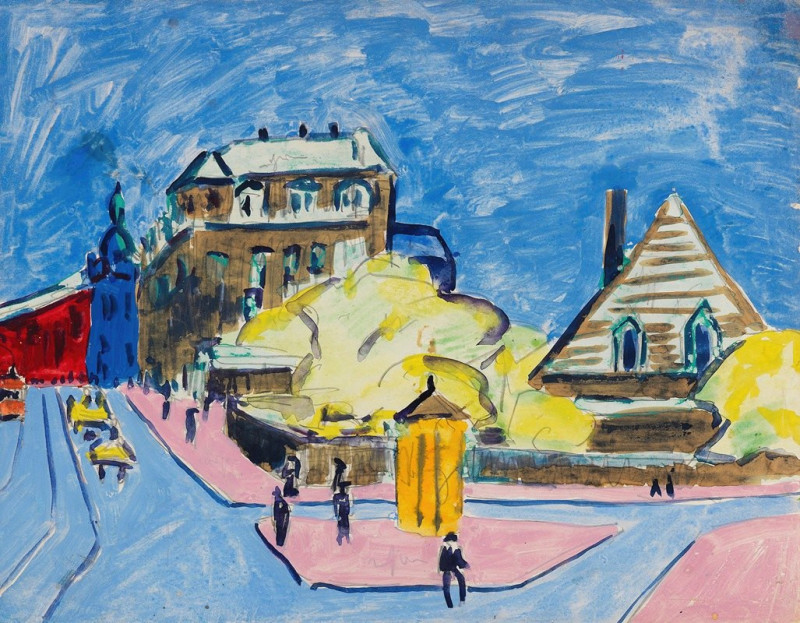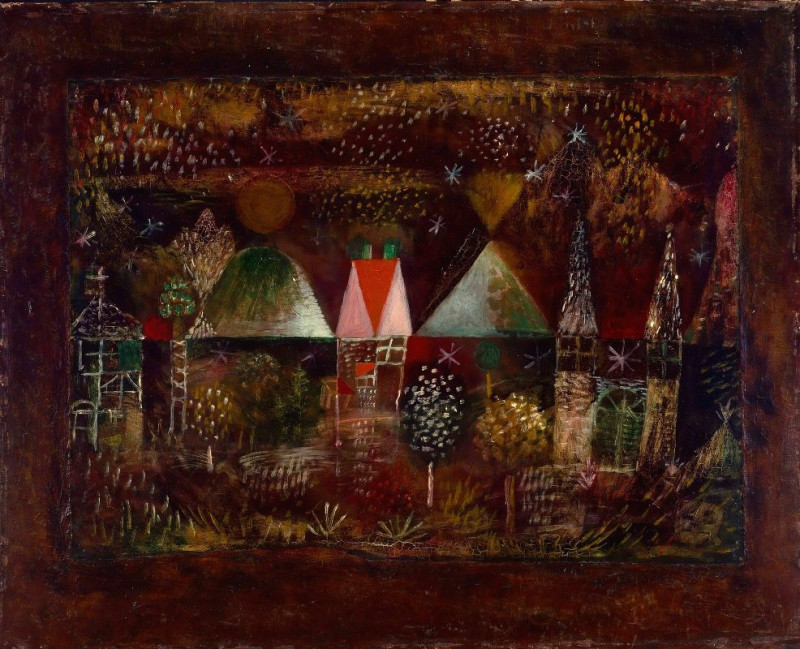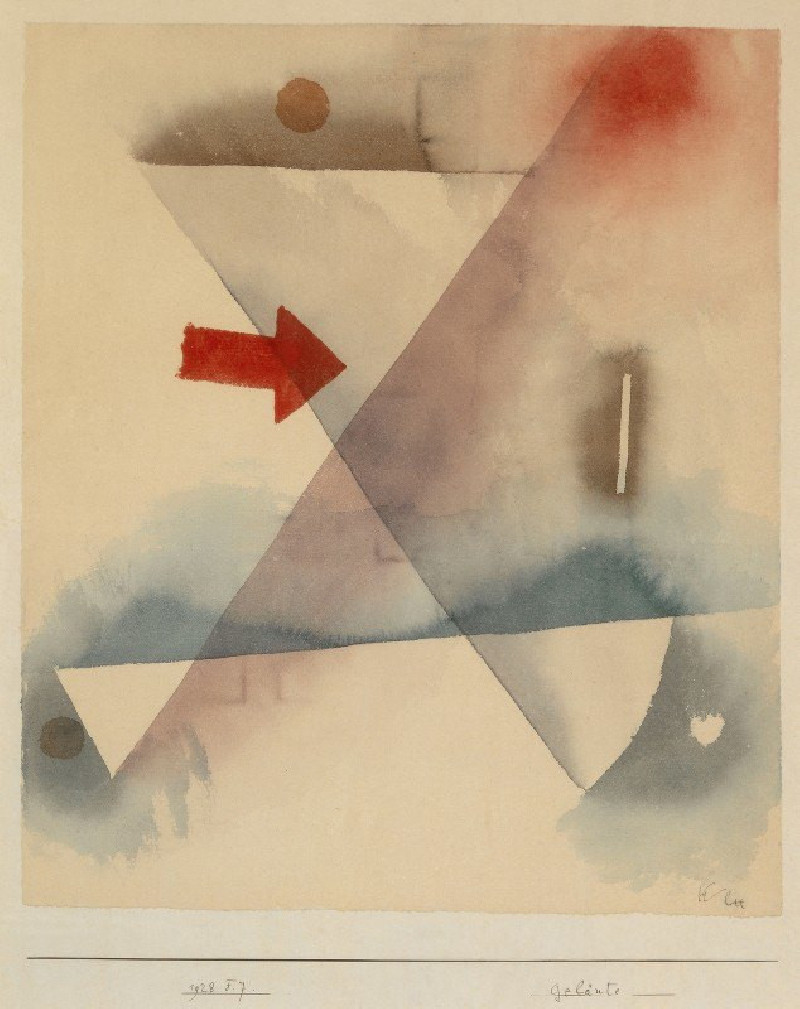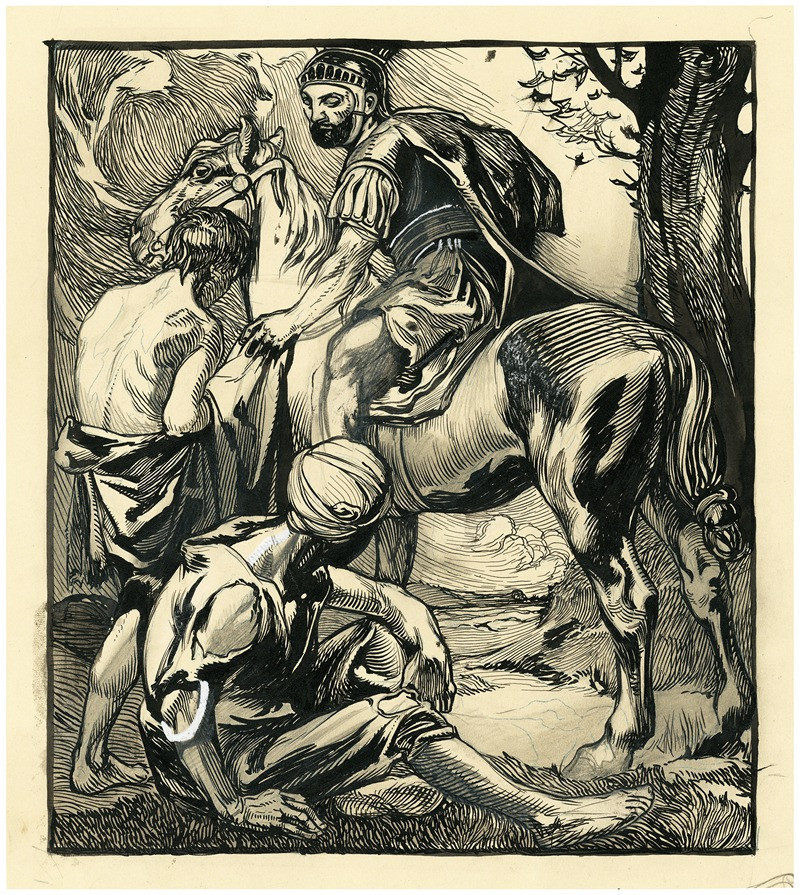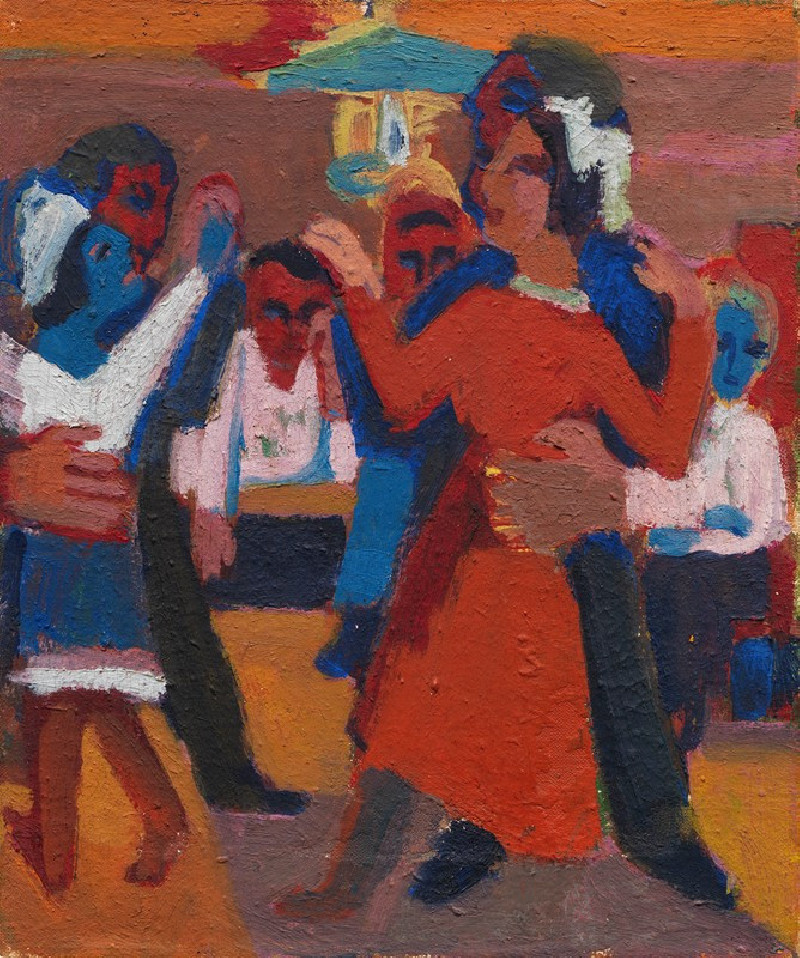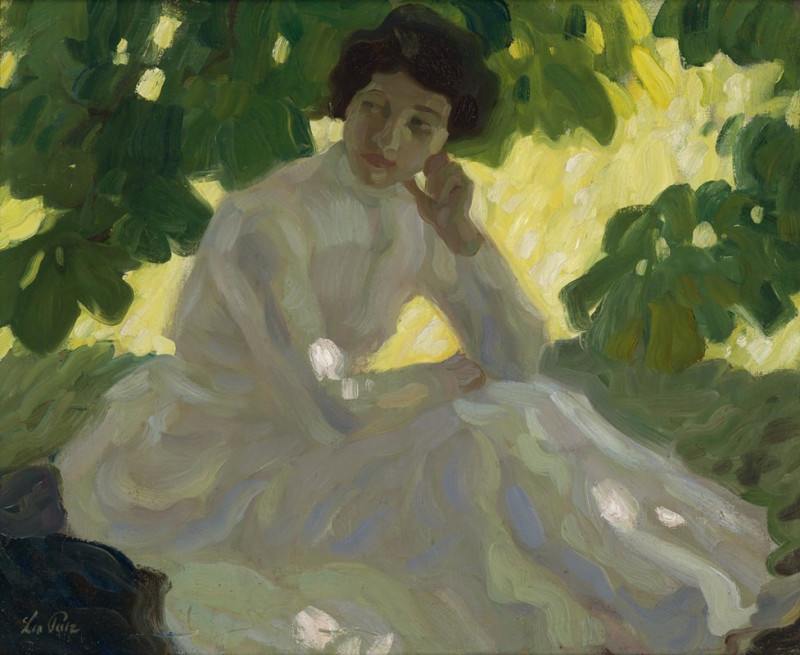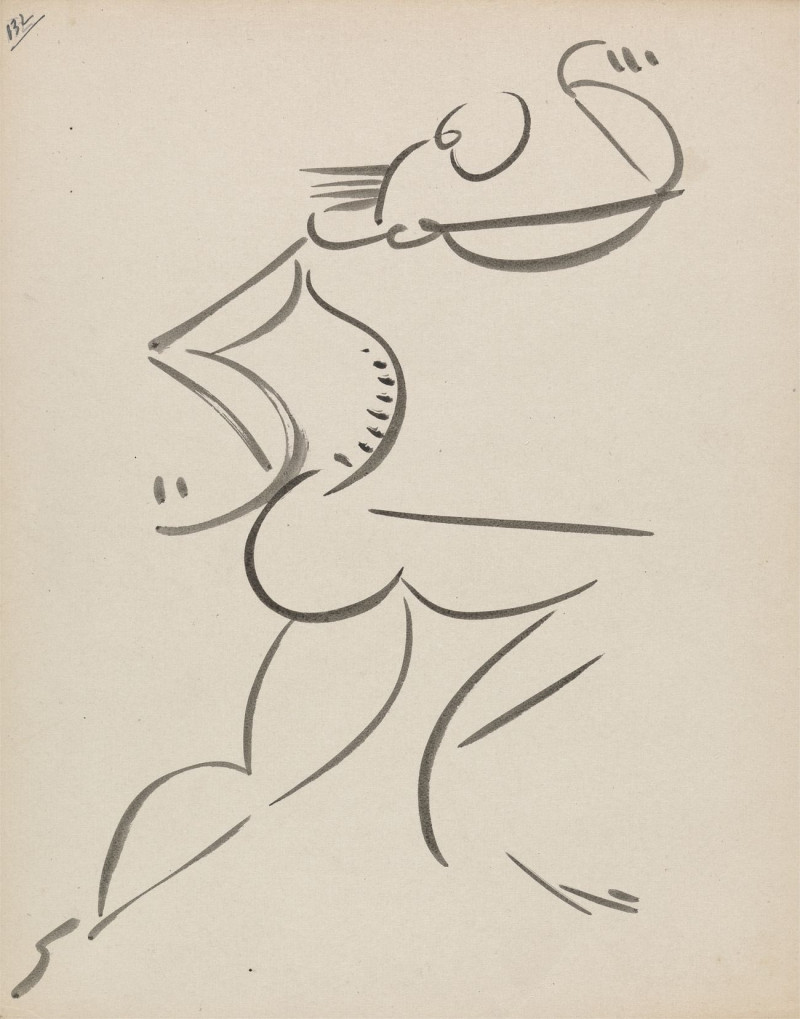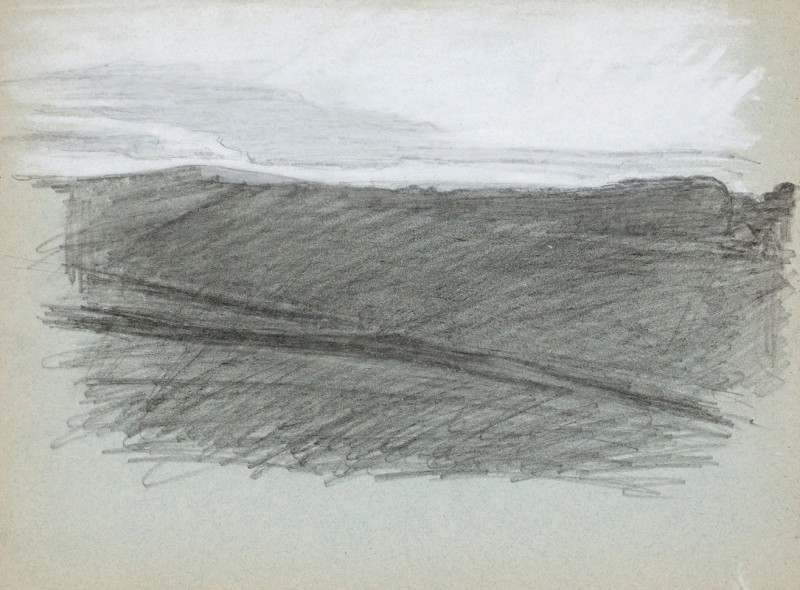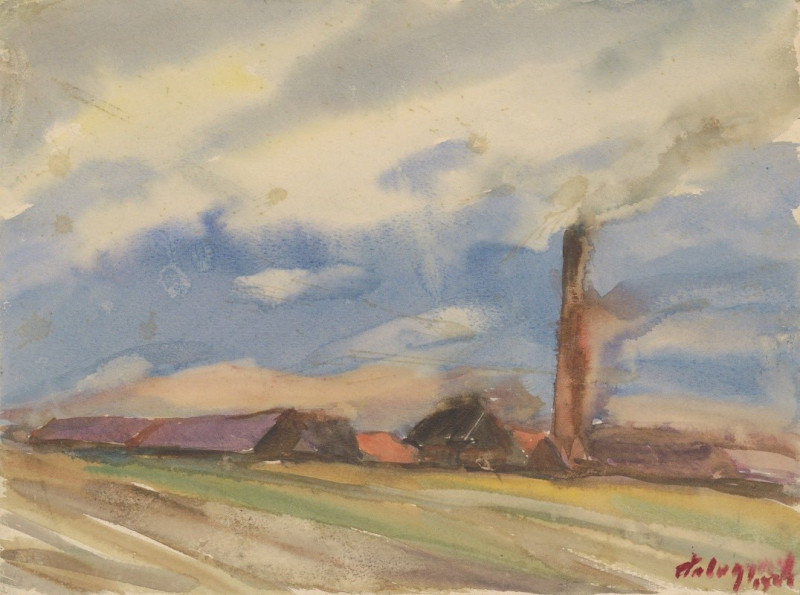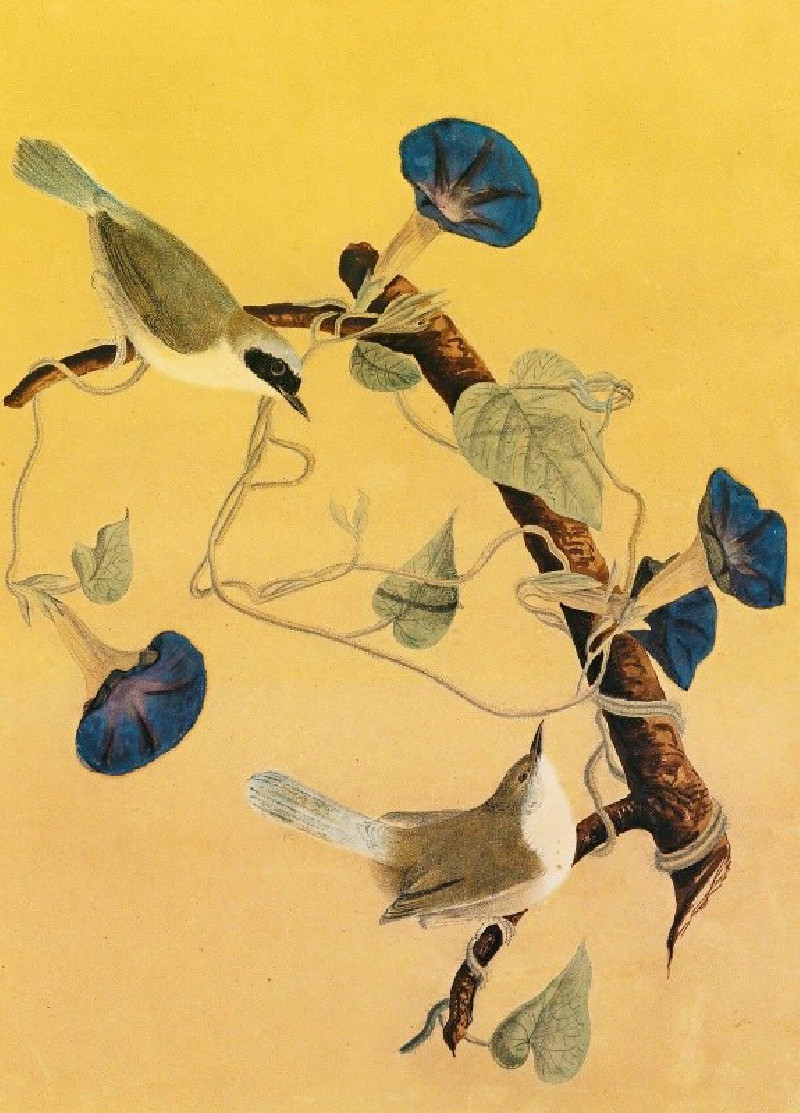An Allegory of Minerva, Fame, History and Faith Overcoming Ignorance and Time (circa 1727)
Technique: Giclée quality print
Recommended by our customers
More about this artwork
Francois Boucher's circa 1727 painting, "An Allegory of Minerva, Fame, History, and Faith Overcoming Ignorance and Time," passionately captures a complex tableau of mythological significance. In this dynamic composition, Boucher depicts Minerva, the Roman goddess of wisdom and strategic warfare, as a central figure illustrating enlightenment and knowledge. Around her, allegorical figures such as Fame, with her trumpet, and History, holding a stylus and tablet, are depicted actively engaging with the goddess, emphasizing the triumph of recorded and celebrated wisdom over ignorance.To the left, we see a putti bearing a wreath, symbolizing victory and honor, hovering near Minerva. This imagery suggests that true achievement is closely tied to wisdom and virtuous actions. On the darker side of the painting, the figures of Ignorance and Time are shown in a struggle, overwhelmed by the enlightened forces. Time, often depicted as an old man with wings, appears weary and defeated amidst scattered books and artifacts, underscoring the message that truth and knowledge ultimately prevail over temporal existence and obliviousness.The use of monochromatic tones adds a dramatic intensity to the scene, allowing viewers to focus on the drama of interaction among these emblematic figures. Boucher’s mastery in employing light, shadow, and fluid lines not only enhances the movement within the piece but also vividly conveys the painting’s profound allegorical narrative.
Delivery
Returns
François Boucher (1703–1770) was a French painter, engraver, illustrator and printmaker. He was a proponent of Rococo and had a huge influence in spreading the style throughout Europe. His art was idyllic and voluptuous with a high-toned palette of blues and pinks. He created designs for all decorative arts, porcelains and tapestries. Boucher also painted several portraits including his patroness Madame de Pompadour. He is one of the most celebrated decorative artists of the 18th century.




